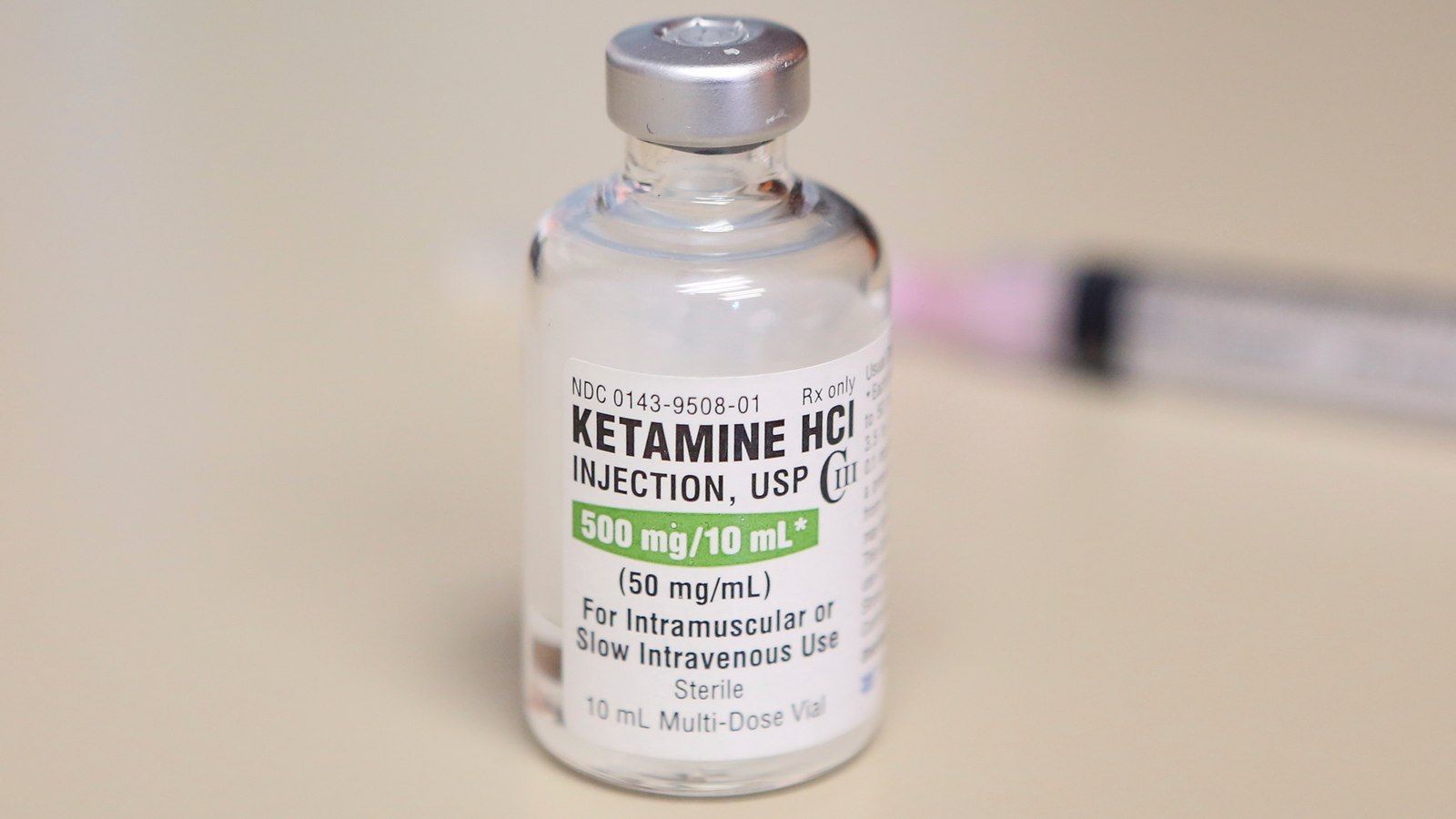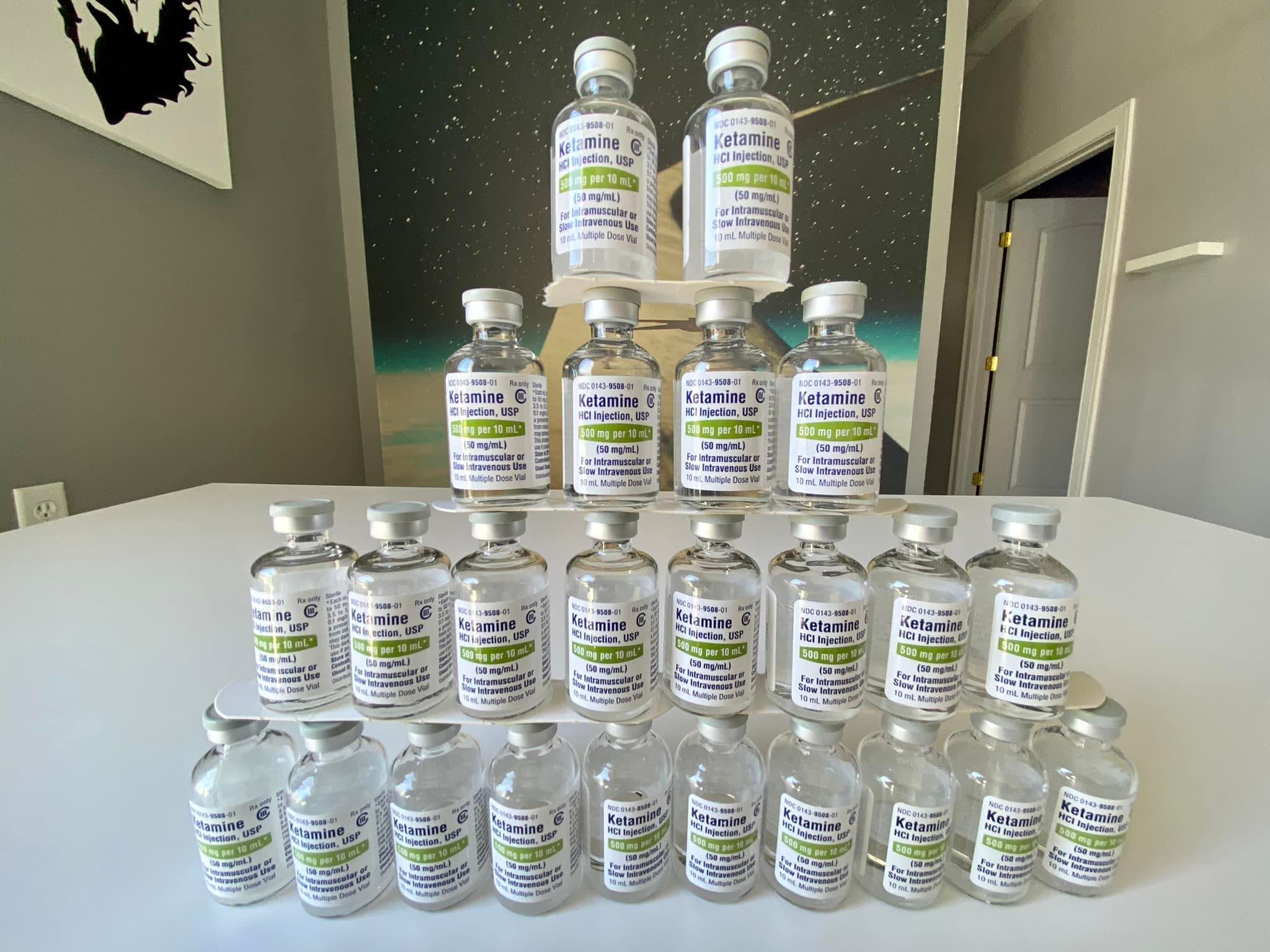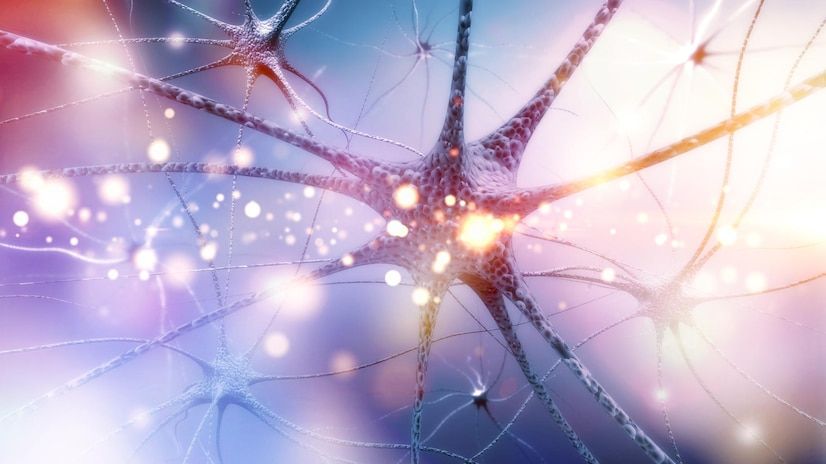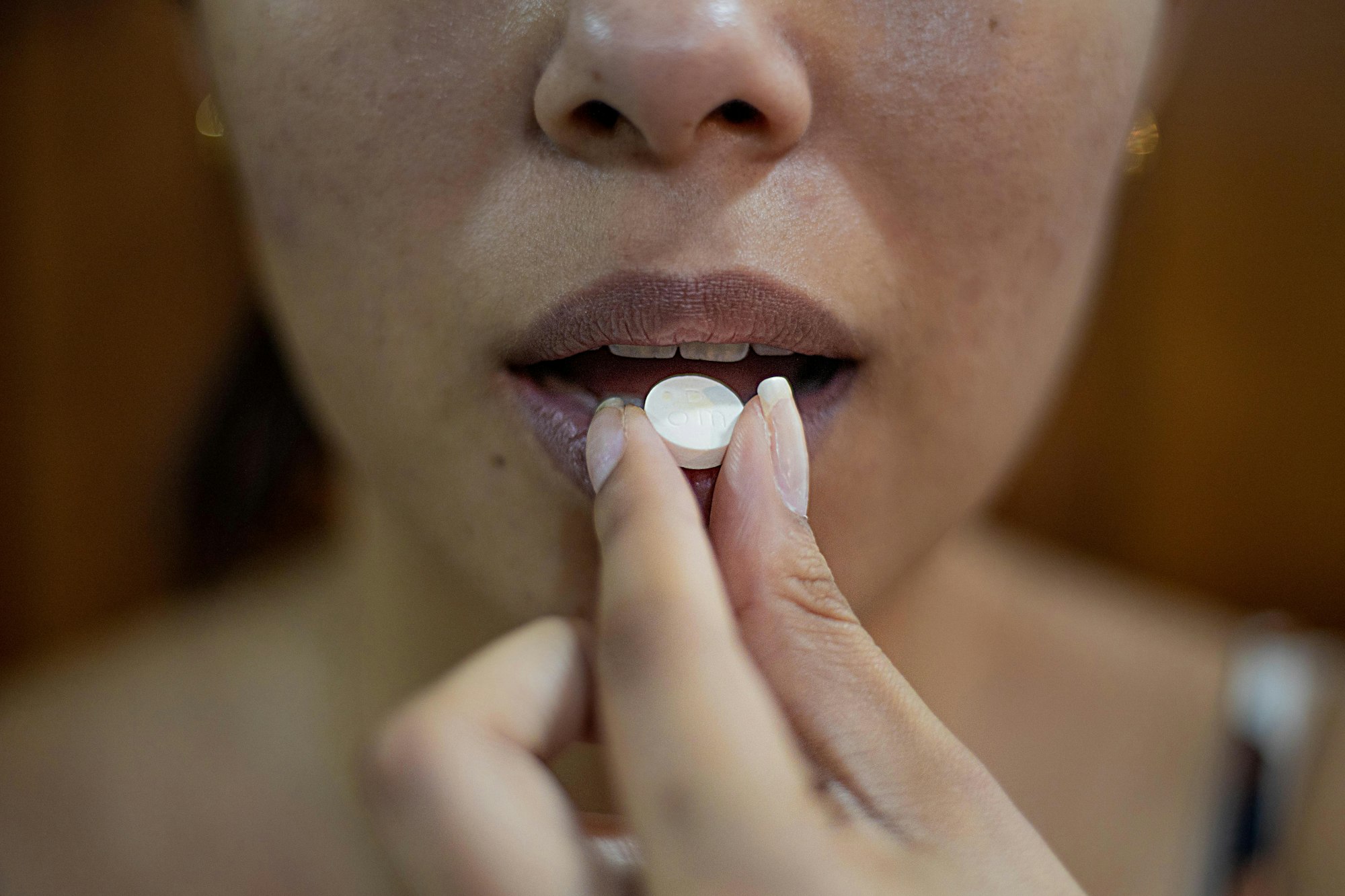Exploring Ketamine in Depression: A New Horizon in Mental Health Treatments
The introduction of ketamine therapy into the realm of mental health has ignited a beacon of hope for those with treatment-resistant depression. Clinical trials have showcased the antidepressant effects of both intravenous ketamine and intranasal forms,

Introduction:
Ketamine, historically known as a club drug, has emerged as a promising treatment for various mood disorders, including major depressive disorder (MDD), which affects millions globally. Despite the advent of selective serotonin reuptake inhibitors (SSRIs) and other traditional antidepressants, a significant number of patients with depression, especially those with treatment-resistant forms, continue to struggle with the debilitating symptoms of severe depression.
The introduction of ketamine therapy into the realm of mental health has ignited a beacon of hope for those with treatment-resistant depression. Clinical trials have showcased the antidepressant effects of both intravenous ketamine and intranasal forms, such as the FDA-approved nasal spray called esketamine. Unlike traditional antidepressants that may take weeks to manifest effects, a single dose of ketamine can lead to a significant decrease in depression symptoms, including suicidal ideation, in a matter of hours. This rapid action is a revolutionary stride in mental health care.
There is a little known fact that Ketamine has a long history in the mental health field that dates back 50 years. In the 1960’s, the FDA approved ketamine as a dissociative anesthetic. In simple terms, that means it allows a person to become detached from their environment. Allowing distortion of sights and sounds.
Understanding Depression and Current Treatments
Depression, clinically known as major depressive disorder (MDD), is a complex and pervasive mental health condition characterized by persistent feelings of sadness, hopelessness, and a lack of interest or pleasure in daily activities. It's a condition that can significantly interfere with an individual’s daily life, affecting emotions, behaviors, and physical health. Those with depression may struggle with sleep disturbances, changes in appetite, concentration difficulties, low energy, and feelings of worthlessness or guilt, among other symptoms.
Treatment-resistant depression (TRD) is a term used when a person's depression does not respond to traditional treatment options. Typically, this is defined after the failure of at least two different treatments. TRD can be particularly challenging because the standard therapies that help many people manage their depression are ineffective for those with TRD, leading to a prolonged and often more severe depressive episode.
Current treatments for depression are primarily pharmacological and psychological:
Selective Serotonin Reuptake Inhibitors (SSRIs): SSRIs are the first line of treatment for depression and work by increasing the levels of serotonin in the brain, a neurotransmitter thought to have a good influence on mood, emotion, and sleep.
Serotonin-Norepinephrine Reuptake Inhibitors (SNRIs): Similar to SSRIs, SNRIs increase levels of serotonin and norepinephrine and are used for major depression and other mood disorders.
Tricyclic Antidepressants (TCAs): These are among the earlier antidepressants developed and can be very effective. However, they often have more side effects than newer antidepressants.
Monoamine Oxidase Inhibitors (MAOIs): MAOIs are used less frequently due to significant dietary restrictions and potential side effects but can be beneficial for some people.
Atypical Antidepressants: This group includes medications that don't fit neatly into the other antidepressant categories, such as bupropion and mirtazapine.
Psychotherapy: Also known as talk therapy, this includes cognitive-behavioral therapy (CBT), interpersonal therapy (IPT), and other forms that have been effective in treating depression.
Electroconvulsive Therapy (ECT): ECT is a medical treatment most commonly used for patients with severe major depression or bipolar disorder who have not responded to other treatments. It involves a brief electrical stimulation of the brain while the patient is under anesthesia.
Despite these options, there are limitations. SSRIs and other oral antidepressants can take weeks to become effective, and not all patients will respond to the first, second, or even third medication they try. Side effects can also be a significant barrier to adherence to medication regimens. Furthermore, while ECT is often effective, it can have side effects such as memory loss and confusion. There is also a stigma associated with ECT that can make it a less attractive option for patients.
In addition to pharmacological and psychological interventions, lifestyle modifications, such as regular exercise, a healthy diet, and adequate sleep, are recommended as part of a comprehensive treatment plan. However, these may not be sufficient for those with more severe forms of depression.
The quest for better treatments for depression, particularly TRD, continues as scientists explore novel therapies and refine existing ones. This ongoing research seeks to offer hope and relief for those for whom traditional treatments have fallen short.
What Is Ketamine?

Historical Context as a Club Drug and Anesthetic
Ketamine, a medication originally developed in the 1960s, quickly gained recognition as a fast-acting anesthetic used in veterinary and human medicine. Its ability to induce a trance-like state while providing pain relief and sedation with minimal impact on respiratory functions made it a valuable tool in surgical settings. However, by the 1970s, ketamine began to surface outside the medical field due to its dissociative and hallucinogenic properties, becoming popular in the club scene as a recreational drug. Known colloquially as "Special K," it was sought after for the detached, dreamlike states it could induce, but it also carried risks, including the potential for abuse and the onset of disturbing sensory experiences often referred to as "K-holes."
The Transition to a Mental Health Treatment Option
Despite its reputation as a club drug, the turn of the century brought renewed interest in ketamine as researchers began to explore its potential in treating various mental health conditions. One of the most groundbreaking developments was the discovery of ketamine's rapid-acting antidepressant effects. Traditional antidepressants, like selective serotonin reuptake inhibitors (SSRIs), can take weeks or even months to take effect and may not work at all for some patients. Ketamine, on the other hand, showed promise in providing relief within hours, even in cases of treatment-resistant depression. This has led to its use in clinical settings for individuals with severe depression, offering hope to those who have not responded to other forms of treatment.
The Mechanism Behind Ketamine Treatment
How ketamine works on NMDA receptors:
Ketamine's unique impact on the brain is primarily through its action on NMDA (N-methyl-D-aspartate) receptors, which are associated with the neurotransmitter glutamate. Unlike traditional antidepressants that target the monoaminergic system (serotonin, norepinephrine, dopamine), ketamine binds to NMDA receptors and inhibits them, leading to a cascade of biochemical events in the brain.
The role of ketamine in modulating neurotransmitters and the brain's ability to form new neural connections:
By blocking NMDA receptors, ketamine prompts a rapid increase in the release of glutamate. This surge in glutamate activates other receptors, which then jumpstart the production of new proteins that help neurons communicate with each other along new pathways known as synapses. Essentially, ketamine appears to foster a conducive environment for neuroplasticity—the brain's ability to form new neural connections—thereby potentially reversing the neural deficits caused by chronic stress and depression.
This swift proliferation of synaptic connections might explain the rapid antidepressant effects of ketamine. Patients often report significant improvements in mood and a decrease in depressive symptoms shortly after treatment, which can be life-changing for those battling severe depression. Additionally, ketamine might influence other neurotransmitter systems, contributing further to its antidepressant capabilities.
The evolution of ketamine has resulted in this medication used in a wide variety of conditions.
The Ketamine Story

Historical Context as a Club Drug and Anesthetic
Ketamine, a medication originally developed in the 1960s, quickly gained recognition as a fast-acting anesthetic used in veterinary and human medicine. Its ability to induce a trance-like state while providing pain relief and sedation with minimal impact on respiratory functions made it a valuable tool in surgical settings. However, by the 1970s, ketamine began to surface outside the medical field due to its dissociative and hallucinogenic properties, becoming popular in the club scene as a recreational drug. Known colloquially as "Special K," it was sought after for the detached, dreamlike states it could induce, but it also carried risks, including the potential for abuse and the onset of disturbing sensory experiences often referred to as "K-holes."
The Transition to a Mental Health Treatment Option
Despite its reputation as a club drug, the turn of the century brought renewed interest in ketamine as researchers began to explore its potential in treating various mental health conditions. One of the most groundbreaking developments was the discovery of ketamine's rapid-acting antidepressant effects. Traditional antidepressants, like selective serotonin reuptake inhibitors (SSRIs), can take weeks or even months to take effect and may not work at all for some patients. Ketamine, on the other hand, showed promise in providing relief within hours, even in cases of treatment-resistant depression. This has led to its use in clinical settings for individuals with severe depression, offering hope to those who have not responded to other forms of treatment.
The Mechanism Behind Ketamine Treatment
How ketamine works on NMDA receptors:
Ketamine's unique impact on the brain is primarily through its action on NMDA (N-methyl-D-aspartate) receptors, which are associated with the neurotransmitter glutamate. Unlike traditional antidepressants that target the monoaminergic system (serotonin, norepinephrine, dopamine), ketamine binds to NMDA receptors and inhibits them, leading to a cascade of biochemical events in the brain.
The role of ketamine in modulating neurotransmitters and the brain's ability to form new neural connections:
By blocking NMDA receptors, ketamine prompts a rapid increase in the release of glutamate. This surge in glutamate activates other receptors, which then jumpstart the production of new proteins that help neurons communicate with each other along new pathways known as synapses. Essentially, ketamine appears to foster a conducive environment for neuroplasticity—the brain's ability to form new neural connections—thereby potentially reversing the neural deficits caused by chronic stress and depression.
This swift proliferation of synaptic connections might explain the rapid antidepressant effects of ketamine. Patients often report significant improvements in mood and a decrease in depressive symptoms shortly after treatment, which can be life-changing for those battling severe depression. Additionally, ketamine might influence other neurotransmitter systems, contributing further to its antidepressant capabilities.
In conclusion, ketamine's journey from an anesthetic and a club drug to a promising mental health treatment highlights the evolving understanding of its mechanisms and potential applications. Its rapid action on NMDA receptors and the subsequent effects on neurotransmitters and neuroplasticity present a novel approach to treating depression, particularly in individuals who have not found relief with traditional therapies. As research continues, ketamine may well redefine the landscape of depression treatment, offering rapid and robust responses in mental health care.

Ketamine Infusions in Clinical Settings
Ketamine, once primarily used as an anesthetic and known for its illicit use, has now become a beacon of hope for many suffering from severe and treatment-resistant depression. Administered in clinical settings, this treatment has shown promising results. Let’s delve into the process of administering ketamine through intravenous (IV) infusions and the protocols that ensure patient safety. Additionally, we'll compare the relatively new esketamine nasal spray to its IV counterpart, discussing their effectiveness and patient adherence to these treatments.
Administering IV Infusion and Monitoring Blood Pressure
Ketamine infusions for depression are typically performed in a clinical setting, such as a hospital or specialized treatment center. The process involves a calculated dose of ketamine being slowly administered into the bloodstream over a period, usually ranging from 40 minutes to several hours, depending on the protocol and individual patient factors.
Throughout the infusion, medical professionals closely monitor vital signs, with a particular focus on blood pressure. Ketamine can cause transient increases in blood pressure and heart rate, hence the importance of real-time monitoring. Blood pressure cuffs and heart rate monitors are standard equipment, ensuring that any adverse cardiovascular responses are quickly identified and addressed, guaranteeing the patient's safety during treatment.
Protocols for Ketamine Infusions and Patient Safety
Clinical protocols for ketamine infusions are meticulously designed to maximize safety and efficacy. These protocols dictate the dosage, rate of infusion, duration of treatment, and frequency of sessions. They are often individualized based on the patient's medical history, response to treatment, and side effect profile.
Before starting a ketamine infusion, patients undergo a comprehensive evaluation to identify any potential health risks. Clinicians follow strict guidelines to ensure that the setting is calm and supportive, as the psychological experience during infusion can significantly influence the treatment’s outcome. The presence of trained personnel throughout the procedure is mandatory to address any psychological distress or physical side effects that may arise.
Nasal Spray vs. Intravenous Ketamine
The approval of esketamine nasal spray, a derivative of ketamine, has introduced an alternative method of administration. This nasal spray, known by its brand name Spravato, is FDA-approved for treatment-resistant depression and is administered under medical supervision in a clinical setting.
Comparison of Esketamine Nasal Spray to Intravenous Ketamine
The main difference between esketamine nasal spray and IV ketamine lies in the method of administration. The nasal spray allows for a less invasive and potentially more convenient delivery system. However, the bioavailability of the drug—how much of the drug actually reaches the bloodstream—is higher in IV administration. This could mean that IV infusions may offer a more potent and immediate effect, although individual responses can vary significantly.
Effectiveness and Patient Adherence
In terms of effectiveness, both IV ketamine and esketamine nasal spray have shown to reduce depressive symptoms, but there are nuances to consider. IV ketamine is often used off-label and has been the subject of numerous clinical trials, with data supporting its rapid and robust antidepressant effects. Esketamine nasal spray, being FDA-approved, has undergone rigorous testing to establish its efficacy and safety for public use.
Patient adherence to treatment regimens is critical for long-term success. Intravenous infusions require visits to a medical facility and monitoring, which can be time-consuming and may pose logistical challenges for patients. The nasal spray, while still requiring a clinical setting for administration, can be a more user-friendly option and may lead to better adherence due to its ease of use and non-invasive nature.
In conclusion, ketamine infusions and esketamine nasal sprays are important developments in the treatment of severe depression. Each method of administration has its advantages and considerations, and the choice between them will depend on a variety of factors including medical history, severity of symptoms, and personal preferences. With both treatments now available, clinicians have more tools than ever to combat the debilitating effects of depression.

Efficacy of Ketamine in Depression
Ketamine's emergence as a potential lifesaver for people with depression, particularly those with treatment-resistant forms, is one of the most exciting developments in mental health treatment. A systematic review of its antidepressant effects and personal accounts from patients provides a multifaceted understanding of its impact. Let’s delve deeper into the evidence of ketamine's efficacy in treating depression, exploring both scientific data and individual experiences.
Systematic Review of Ketamine’s Antidepressant Effects
Numerous systematic reviews and meta-analyses have been conducted to assess the antidepressant effects of ketamine. These comprehensive reviews scrutinize a range of clinical trials, often finding that ketamine can produce rapid antidepressant effects in individuals with major depressive disorder and treatment-resistant depression. The studies typically focus on the rapid onset of ketamine's effects, noting significant improvements in depressive symptoms within hours to days after administration, which is a stark contrast to the weeks or even months taken by traditional antidepressants like selective serotonin reuptake inhibitors (SSRIs).
The reviews also note the drug's ability to reduce suicidal ideation acutely, which is particularly noteworthy given the paucity of treatments available that can rapidly alleviate such dangerous symptoms. However, these reviews also emphasize the need for further research to understand the long-term efficacy and safety of ketamine treatment for depression.
Personal Accounts and Case Studies of Depressed Patients
Beyond clinical trials, personal accounts and case studies add a layer of understanding to the efficacy of ketamine. Patients often share stories of significant relief from depressive symptoms after ketamine treatments, which had not been achieved with other medications or therapies. These narratives consistently speak to the transformative potential of ketamine, describing profound changes in mood, outlook, and quality of life.
However, it's important to recognize that individual experiences with ketamine can vary widely. While some patients report lasting improvements, others may experience only temporary relief or find that the benefits diminish with time.
Ketamine for Treatment-Resistant Depression
When it comes to treatment-resistant depression, the subtype of ketamine known as racemic ketamine has been the subject of much research. Racemic ketamine, which is a mixture of two mirror-image molecules, has been shown to be effective in managing severe depression that has not responded to other treatments.
Exploration into racemic ketamine's efficacy reveals that it may work through mechanisms different from traditional antidepressants, affecting the glutamatergic system rather than the monoaminergic neurotransmitter systems. Its ability to rapidly modulate neurotransmitter activity and promote neuroplasticity—the brain's ability to form new neural connections—may explain its rapid antidepressant effects.
Insights from Health Care Providers and Patients
Health care providers who administer ketamine for depression often report seeing significant improvements in their patients. They note that for many who have suffered from severe, intractable depression, ketamine infusions can be life-changing. These medical professionals also point out the importance of a comprehensive treatment plan, which includes ketamine as one part of a multi-faceted approach to mental health care.
Patients who have undergone ketamine treatment for depression frequently provide firsthand insights that underscore the clinical findings. They speak of ketamine's unique impact on their depressive symptoms, often highlighting the sense of detachment from pervasive negative thought patterns and a renewed ability to engage with therapeutic practices and daily activities.
In sum, the efficacy of ketamine in depression, as demonstrated by systematic reviews and substantiated by personal accounts, presents it as a potent tool against depression, especially where other treatments have failed. Nonetheless, as ketamine continues to be used and studied, it's crucial to maintain careful oversight to ensure the safety and well-being of those seeking relief from one of the most common and debilitating mental health conditions.
Ketamine in The Emergency Department

Comparative Analysis: Ketamine vs. Traditional Antidepressants
The landscape of depression treatment is witnessing a paradigm shift with the advent of ketamine, a drug traditionally used for anesthesia. In the emergency room (ER) setting and beyond, ketamine's role has expanded to include the rapid treatment of acute depressive symptoms and suicidal ideation, presenting a stark contrast to the slower mechanisms of traditional antidepressants.
Ketamine's Rapid Action in Treating Depressive Symptoms
Traditional antidepressants, such as SSRIs and tricyclics, typically require a prolonged period, often several weeks, to manifest noticeable therapeutic effects. This delayed onset can be a significant drawback, particularly in acute scenarios where immediate symptom relief is crucial. Conversely, ketamine's mechanism of action is much faster. In clinical settings, including the ER, ketamine has been observed to reduce depressive symptoms within hours after administration. This rapid action is attributed to its direct influence on the brain's NMDA receptors and the subsequent modulation of glutamate, a neurotransmitter pivotal for synaptic plasticity.
The quick onset of ketamine's effects is not only beneficial for providing immediate relief but is also crucial in the context of an ER, where patients may be experiencing severe depression or are at risk of self-harm. The ability to quickly stabilize mood and thought processes can be lifesaving.
The Significance of Ketamine for Those with Suicidal Thoughts
One of the most remarkable aspects of ketamine's use in depression treatment is its significant impact on patients experiencing suicidal ideation. Suicidal thoughts require urgent intervention, and in such high-stakes situations, the rapid antidepressant effects of ketamine can be particularly valuable. In the ER, where time is of the essence, ketamine can be administered to provide immediate symptom relief, potentially averting a crisis.
The conventional antidepressants often fall short in this area, not only because of their slow onset but also due to their less direct effects on mood regulation. Ketamine, however, has been associated with a rapid reduction in suicidal thoughts, which can be critical for patient safety. This advantage of ketamine is increasingly being recognized, leading to its cautious but groundbreaking use in emergency medicine for immediate mental health crises.
Ketamine in the ER
In emergency medicine, ketamine offers unique benefits due to its fast-acting nature. It's used not only for its primary function as an anesthetic but also increasingly for its off-label application to treat acute episodes of severe depression and suicidality. The quick administration and subsequent rapid improvement in patients' depressive symptoms make it a valuable tool in the ER, where medical professionals are often the first to interact with individuals at a high risk of self-harm.
The comparison between ketamine and traditional antidepressants highlights significant differences in efficacy, particularly in the speed of alleviating symptoms and in emergency situations. Ketamine's rapid antidepressant effects, especially its impact on suicidal ideation, represent a significant advancement in mental health treatment. As its use in clinical and ER settings continues to evolve, ketamine is becoming an integral part of the conversation on effective interventions for severe depression, challenging the limitations of traditional antidepressant therapies and providing hope for rapid relief in life-threatening situations.
How is The Use of Ketamine Impacting Mental Health Treatment?

Future of Ketamine Therapy
Ketamine therapy, with its unconventional approach to treating depression, has opened new avenues in the field of psychopharmacology. The drug’s utility in managing symptoms of depression and its rapid action have been well-documented, leading to increased interest in its potential applications.
Ongoing Research and Future Clinical Trials
Research into ketamine therapy is gaining momentum, with numerous studies exploring its full potential and mechanisms of action. Future clinical trials are expected to focus not only on optimizing dosing and administration methods but also on understanding the long-term effects of ketamine use. These studies will likely investigate the sustainability of its antidepressant effects, potential dependency issues, and the best protocols for maintenance therapy.
Ketamine and Treatment Resistant Depression

Ketamine’s Potential Beyond Depression
The potential therapeutic effects of ketamine extend beyond major depressive disorder. Researchers are investigating its efficacy in treating a spectrum of mental health conditions, including bipolar disorder and post-traumatic stress disorder (PTSD). For bipolar disorder, ketamine may offer relief for depressive episodes without triggering mania, a risk associated with some traditional antidepressants. In the context of PTSD, ketamine’s ability to facilitate the formation of new neural connections may help patients in processing traumatic memories and reducing anxiety symptoms.
Conclusion: Regulatory and Medical Perspectives
The Food and Drug Administration (FDA) has cautiously approached ketamine, approving a nasal spray form of the drug, esketamine, for treatment-resistant depression. This indicates a recognition of ketamine's potential while also acknowledging the need for more comprehensive data. Medical directors and mental health professionals are closely monitoring the evolving research, balancing the enthusiasm for a novel treatment against the imperative of ensuring patient safety.
The Emerging Role of Ketamine in Depression Treatment
Ketamine’s role in treating depression is expanding as more healthcare providers adopt it as an alternative to traditional antidepressants, particularly for patients who have not responded to other treatments. As mental health paradigms shift towards personalized medicine, ketamine therapy may become a key component of customized treatment plans. Its fast-acting nature and potential versatility make it an increasingly valuable option in a psychiatrist's toolkit.
The ongoing research and the gradual embrace by regulatory bodies suggest a future where ketamine therapy could become more mainstream, provided that future studies reinforce its safety and efficacy. It represents not just a treatment but also a beacon of hope for individuals with mental illnesses that have been resistant to conventional therapies. With continued investigation and thoughtful integration into treatment protocols, ketamine could significantly alter the landscape of mental health treatment.
Ketamine is increasingly being used to treat treatment resistant depression. Studies have shown that ketamine may be effective in treating major depressive disorder (MDD) and treatment-resistant depression (TRD). Ketamine works differently than other antidepressants by targeting glutamate activity while reducing GABA activity, rather than neurotransmitter reuptake. Additionally, the effects of ketamine have been found to be much faster than traditional antidepressant drugs, often providing relief within hours rather than weeks or months.
Yes, ketamine produces feelings of sedation and dissociation. This is because ketamine produces a rapid onset of action that produces an altered state characterized by decreased awareness of one's environment, as well as a sense of being disconnected from the physical body. Ketamine also alters perception and can cause intense visual, auditory, or tactile hallucinations which may last for several hours. It is important to note that the dissociative effects produced by ketamine can be overwhelming to some people, so medical professionals should monitor patients closely during treatment to ensure safety.
What Does It Feel Like During a Treatment

Ketamine produces feelings of muscle relaxation, sensory alteration and dream-like states. In the human neuroscience field it has shown promise in helping to understand psychiatric disorders like bipolar disorder and major depressive disorder (MDD).
It produces psychoactive effects that are distinct from other drugs, such as psychedelic hallucinations and dissociative experiences.
Taking ketamine helps with controlling symptoms of depression, resetting your brain. Ketamine therapy is a safe, effective form of treatment that has been studied extensively and has shown promising results for people with depression. Through ketamine infusions, the effects of depression can be reduced or even reversed in some patients. The exact mechanism behind how ketamine works to reduce symptoms of depression is still being studied but research suggests ketamine can help reset your brain and alter the chemical balance in the brain that causes depression.
Routes of Administration of Ketamine

Ketamine can be taken orally or intravenous injection, intramuscularly, or subcutaneously. When taken at higher doses it produces a dissociative state that distorts reality and alters perception of time and body awareness. At low doses it produces milder effects including sedation, analgesia, and increased sociability. Depending on the dosage, effects can last anywhere from minutes to hours.
Pros and Cons Ketamine Nasal Spray, Esketamine

Ketamine nasal spray is a relatively new form of ketamine therapy that has been developed to provide an alternative to intravenous ketamine infusions. The nasal spray has been developed by Johnson and Johnson, and is sold under the name of Spravato.
Nasal spray ketamine is administered as an atomized mist, which can be inhaled or sprayed into the nose. This form of ketamine therapy requires fewer visits to the doctor and can offer quick relief from depressive symptoms. It has been found to be safe and effective and may even work faster than ketamine infusions in some cases.
The rate of absorption for nasal spray will vary depending on the patient. Nasal congestion, allergies, or other conditions can affect the absorption rate. This is a problem , as you never know what dosage you are receiving and consistency is important for good results.
Things that will interfere with the absorption of ketamine are alcohol, caffeine and nicotine. Therefore it is important to abstain from these substances when undergoing ketamine therapy.
If you experience adverse effects from nasal ketamine therapy, it is important to contact your doctor immediately. You may need to adjust the dosage or switch to ketamine infusions in order to get the best results.
Pros and Cons Of Oral Ketamine

Oral Ketamine is a medication used to treat various mental health conditions, including depression and anxiety. It has become increasingly popular in recent years due to its fast-acting effects and the fact that it does not come with the same risk of addiction as other drugs. However, like all medications, there are both pros and cons associated with oral ketamine use. Pros: - Oral Ketamine can provide quick relief from depression, anxiety and PTSD symptoms. The effects may be felt within minutes of taking the drug, which is much faster than many traditional antidepressant medications. - Ketamine also has fewer side effects than other medications used to treat mental health conditions, making it safer for long-term use.
Oral ketamine Versus Intravenous Ketamine
Oral Ketamine is typically taken in the form of a pill or solution, while intravenous ketamine is injected directly into the bloodstream. - Oral Ketamine has a slower onset time than IV Ketamine, meaning it may take longer to feel the effects. However, this also means that oral Ketamine may be better tolerated and have fewer side effects than IV Ketamine.
The Cons of Taking Oral Ketamine
Oral Ketamine can cause nausea and vomiting if not taken properly. This can be minimized by taking the medication with food and/or staying hydrated throughout the day. Ketamine may cause dissociative symptoms such as feeling disconnected from reality or confusion. Therefore, caution should be used when operating machinery or engaging in activities that require concentration after taking Ketamine.
Ketamine can have significant effects on the cardiovascular system, including changes in heart rate and blood pressure. If you have any pre-existing heart conditions, be sure to consult with your doctor before taking Ketamine.
Ultimately, oral ketamine is an effective treatment for various mental health conditions when used properly and as prescribed by a medical professional. While there are potential side effects associated with its use, these can usually be managed or minimized with proper dosing and regular monitoring from a healthcare provider. If you think Ketamine may be right for you, talk to your doctor today to find out more information.
Pros and Cons of Ketamine Intramuscular Injection

Intramuscular ketamine is a relatively new form of ketamine therapy that has been used to help those struggling with depression. It is administered as an injection into the patient’s muscle and works by resetting the brain pathways associated with depressive thoughts and behaviors. While ketamine for depression can be incredibly helpful for some people, it does come with certain risks and potential side effects.
The pros of intramuscular ketamine include its fast-acting nature; patients typically feel relief from their symptoms within hours or days. Additionally, ketamine does not have the same long-term risks as many other forms of antidepressant medication such as weight gain, sexual dysfunction, liver injury issues and more.
However, there are some cons to ketamine therapy for depression. The most common side effects are dizziness, nausea, anxiety, and hallucinations. Additionally, ketamine has the potential to be abused recreationally and can be addictive, so it is important to discuss this possibility with your healthcare provider before beginning ketamine treatment.
If you are considering intramuscular ketamine as a form of depression therapy, it is important to discuss all of the pros and cons with your doctor. They will be able to help you decide if ketamine is right for you and monitor its effectiveness over time. With careful monitoring and consideration of potential risks, intramuscular ketamine may provide a viable option for those struggling with depressive symptoms.
Pros and Cons of IV Ketamine

The pros of intravenous ketamine include its ability to work quickly and effectively in reducing symptoms of depression, anxiety, and other mental health issues. Dosages are managed depending on the patients response.
If a patient experiences side effects during an infusion , the dosage can be adjusted accordingly. Other methods of administration do not have the ability to adjust the dosage or respond with medications that would alleviate adverse reactions such as nausea.
Ketamine infusion therapy is administered by a skilled medical professional in a clinical setting, where the patient’s response to the ketamine can be monitored closely.
The effects can be felt within hours after administration and last anywhere from four days to two weeks. It also appears to have fewer side effects compared to traditional antidepressant medications. Additionally, ketamine infusions can produce significant and long-lasting improvements in symptoms such as intrusive thoughts, suicidal ideation, and general depression.
Side effects of Ketamine

While it produces a wide range of effects, ketamine should always be used with caution and under the supervision of a healthcare professional.
It is also important to be aware that long-term use of ketamine can cause physical and psychological dependance, as well as other adverse health effects such as impaired motor skills, cognitive deficits, and bladder problems.
With proper medical guidance, ketamine use can provide relief from mental health illnesses like depression or anxiety as well as pain disorders like fibromyalgia. The unique properties of ketamine use make it an important part of human neuroscience and psychiatry research, offering potential insights into the causes of psychiatric illnesses and new treatments.
Ketamine can also lead to withdrawal symptoms such as anxiety and headaches. It's important to understand these potential side effects in order to make sure you're safe and comfortable when undergoing ketamine therapy.
Psychological dependance of ketamine is a serious issue and ketamine withdrawal symptoms can be difficult to manage. It is important that ketamine therapy is done responsibly, with the guidance of experts in ketamine treatment.
If you are considering ketamine as a way to reset your brain and overcome depression, make sure to familiarize yourself with the risks associated with ketamine use and understand any potential withdrawal symptoms that may arise.
Ketamine infusions give a patient the ability to take time for self-reflection. It also allows for a better understanding of self and others. Ketamine is changing how the mental health sector treats patients.
What to Look for In a Ketamine Provider

What to look for in a ketamine provider: When seeking out a Ketamine provider, it is important to look for someone who is experienced and knowledgeable about the drug. They should have an understanding of the potential risks associated with Ketamine use, as well as being familiar with the dosages needed for different effects. The health care professional should also be able to provide advice on how Ketamine can be used safely and appropriately. It is also important to make sure the Ketamine provider you choose is licensed, qualified and certified in Ketamine use. Finally, it is a good idea to discuss any health conditions or medications you are currently taking with your Ketamine provider before using Ketamine.
Ketamine should always be taken with caution, under the supervision of a healthcare professional. Make sure to research Ketamine providers in your area and always look for someone who is experienced and knowledgeable about Ketamine use. By doing so, you can ensure that Ketamine is used safely and appropriately.
If you have any questions or concerns, it is important to discuss them with your Ketamine provider before using Ketamine. Taking Ketamine can be a positive experience but it is important to always be aware of the potential risks and side effects associated with its use.
We encourage all mental health patients... to take a multi pronged approach to your treatment plan.
This approach would include:
- Establishing health and wellness through diet
- Exercise
- Meditation
- Relaxation methods
- Breathing techniques
- Along with your talk therapy and counseling.
Talk to your doctor or a mental health professional about the potential benefits and risks of ketamine therapy so you can make an informed decision on whether or not it’s right for you. Remember, ketamine should only be used under medical supervision - never attempt self-medication! With the help of professionals, ketamine could be a safe and effective way to reset your brain and overcome depression.
Disclaimer: This content is intended for informational purposes only and should not be used as a substitute for professional medical advice, diagnosis or treatment. If you are seeking medical advice, please consult with a qualified doctor or health care professional
Our Resource section can help you find the information and tools that you need. We have courses, videos, checklists, guidebooks, cheat sheets, how-to guides and more.
You can get started by clicking on the link below. We know that taking care of a loved one is hard work, but with our help you can get the support that you need.
Click here to go to Resource Section now!



